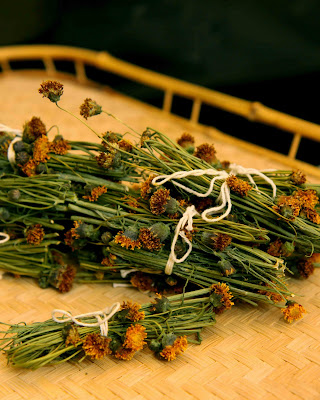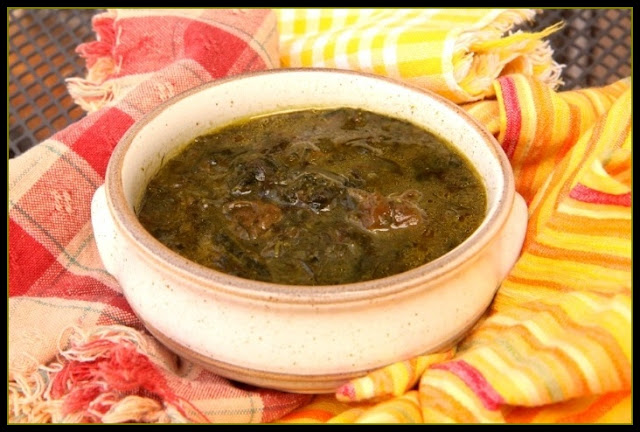In Pursuit of Local Teas - Strawberry Leaf and Navajo Teas
One of my major goals for the growing season this year was to find excellent local teas (the other goal - to fill my spice cabinet with foraged herbs, instead of relying upon non-natives like rosemary and basil). There are umpteen million things out there with which I could make tea. But finding the few tastiest has taken a bit of experimentation.
You'd laugh if you saw my pantry. It used to be that it was just stuffed with home-canned goods, and my chest freezer full of meat. Now, I've added the extra chaos (nope, my pantry never had those neatly aligned rows) of drying herbs. They're hanging in bundles from the ceiling, they're heaped atop my chest freezer. Not so convenient, that, when I want to get at my roadkill.
But, being a forager and preserver, this is one of the main ways that I will keep my pantry stocked throughout the long, cold winter. As time passes, I'm beginning to realize that preserving in small batches and with a variety of methods are the keys to successful food storage. It means that preserving is a comfortable part of my life, rather than an angry spurt of canning in the fall. It also means that I will have a variety of local foods to choose from come winter, not just endless jars of sliced peaches, jam, and tomatoes. Next winter, not only will I have canned goods, but I'll have pickles, chutneys, compound butters, dried spices, dried mushrooms (if the mushroom gods should smile upon me, that is), and tea.
And you see, I'm really excited about the tea. I flippin' love tea. I drink about half a gallon per day, year round. But knowing that the majority of the tea that I like comes from the other side of the planet is a little unsettling.
Which brings me back to that goal, of finding local tea - something I can pick right in my own hometown, or in the nearby mountains. When the snow melted this year, I wasted no time in trying all of the leafies and flowers I could get my hands on, chasing down my tea dreams.
Gotta say, a lot of these ended up tasting vaguely green, like spinach water. And being that taste was my foremost consideration, this wasn't a good thing. I ain't drinking spinach-water just because it's foraged.
Navajo Tea
For now, I've come up with two teas that I rather like, both of which grow nearby in abundance. The first tea that I've come to enjoy is widely know as Navajo tea, as it has a long history of being enjoyed by the Navajo people. The plant is commonly known as greenthread or cota. Thelesperma megapotanicum grows to approximately two feet tall, with a thin thread-like stem and leaves, and tight yellow flowers that somewhat resemble dandelion.
To make traditional Navajo tea bundles, cut whole stalks of greenthread, leaving 3-4" above ground for regrowth. Gather 3-5 stalks, and bend back and forth in 4" lengths to create bundles, tie with cotton string, and dry.
The resulting bundles are completely charming in appearance. But it's the fact that they nearly taste like green tea that I most enjoy. Brew one bundle in a half gallon of water. Drink hot or iced.
Strawberry Leaf Tea
I'm fortunate that strawberries grow in great quantities in the lower-elevation mountains. If I'm lucky enough to beat the animals, I might get to enjoy a few tiny fruit in late summer. But I don't count on it, and definitely don't count on finding enough to preserve. Not here, anyhow. However, harvesting enough strawberry leaves to make tea is easy.
Every time I go hiking, I pick a bag full of strawberry leaves, and bring them home to dry. I brew up the leaves (I try to imagine an amount that would smush down to 3 Tbsps, but am not fussy about it) in half a gallon of water.
This one is more of a functional tea (although I quite enjoy it's subtle, tart taste) I make sure to drink this iced tea often in the heat of summer, as strawberry leaves are used medicinally for cooling the body.
A Note on Mallow
As I mentioned, taste is my foremost consideration, but keep in mind that all plants have medicinal components. You might want to refer to Bek's post about infusions to find an herb that best suits your needs, if you are looking for a functional tea.
Being that I live in an arid environment, I also add mallow to my teas, in the form of cheeseweed leaves, or scarlet globe mallow roots (the upper plant is too fuzzy and needs to be strained). Kiva Rose's monograph of the malvas points to their properties of moisturizing tissues, and this is helpful in both the winter and the summer in. Mallow can help keep your lungs and skin nice and moist, if you live in an area with low humidity.
Also, I've found that mallow adds a bit of body to my herbal teas, which makes them feel more like a commercial tea in the mouth. It's a subtle thing, but the added viscosity makes them even more enjoyable to me.
What are your favorite foraged teas?
Happy to share with Real Food Wednesday, and Pennywise Platter Thursday.
And, yippee! You can also find this post on Punk Domestics!!!





